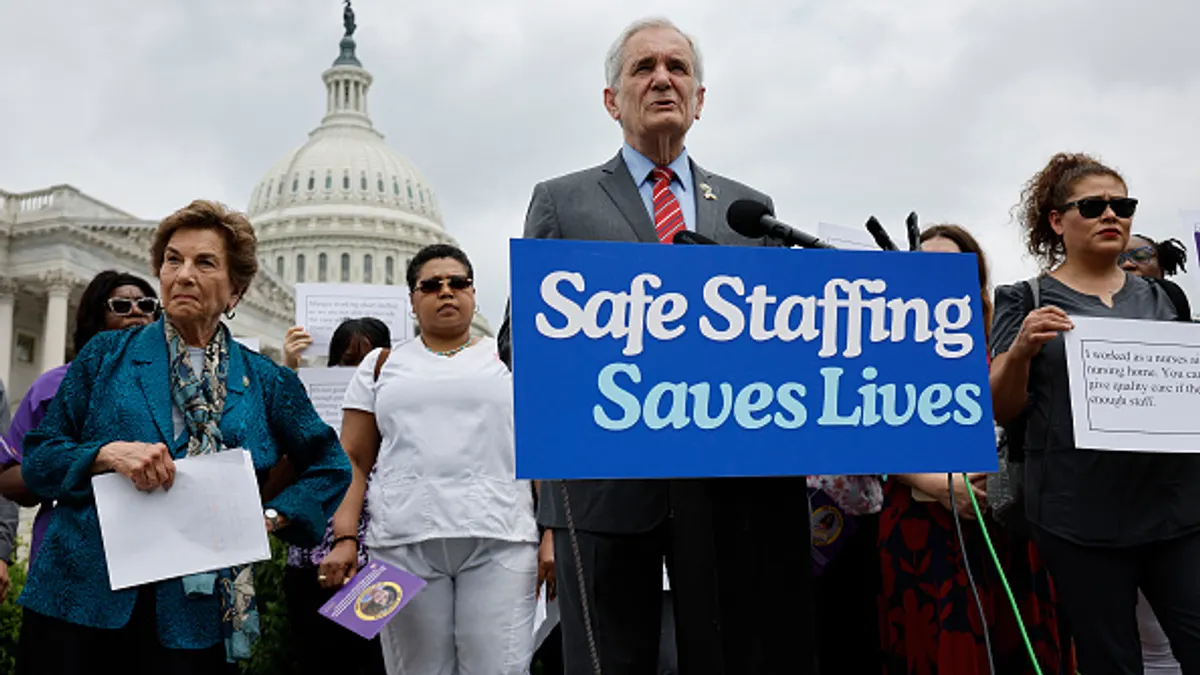Michelle Dix is senior vice president, Human Capital Consulting, at Hub International insurance brokerage.
Employee turnover is a costly issue to U.S. businesses, and while voluntary job quits dropped to 44.5 million in 2023 from the previous year’s record-breaking 50.6 million, there’s a ten-plus-year trend at work that HR leadership is grappling with.
It’s not just the tangible costs of the recruitment and retention battles that drag an organization down. It’s worth noting, however, that Gallup has found that replacing an employee costs up to two times their annual salary. Thus, a company employing 100 people with an average salary of $50,000 may pay as much as $2.6 million annually in turnover costs.
What should be of equal or greater concern is what’s behind the turnover, and its impact. One is the ripple effect of lack of engagement (32% of full- and part-timers in 2022, according to Gallup), which is most likely to be caused by workers who have a poor relationship with managers. It drives up quit rates as employee satisfaction and productivity rates decline.
In fact, managers have a pivotal role in shaping an organization’s success. The most effective managers influence the kind of supportive corporate culture that attracts the best people and encourages them to stick around.
They know how to get the most out of employees. Productivity and other performance measures benefit as effective managers — and leaders overall, for that matter — walk the talk, investing 2.6 times more in intangibles like workforce capabilities than less effective competitors.
But what makes an effective leader, anyway? And more to the point, can the qualities that mark one be coached?
Behaviors versus skills
It should be a given that those who have earned management positions have proven themselves on the skills front, whether those are soft (communication or time management) or hard/technical (sales, financial management, graphic design). Behaviors are how one interacts with others and situations or surroundings.
They are different, but related. Importantly, though, it’s a lot easier to build a skill set than it is to change a behavior. Incredible financial acumen or a keen understanding of the marketplace are important skills to have. But effective leaders also bring certain foundational behaviors to the party. Primary among them is empathy — or caring, authentically, for all of the organization’s stakeholders.
The boss who asks about the birthday party of a worker’s child, or another employee’s vacation plans, has the right idea — providing the interest is both well-meaning and unforced.
The most effective leaders have an approach to interpersonal dealings that mixes candor with caring to build a trusting relationship. The boss who behaves in this way, for example, holds people accountable for their decisions and job performance without allowing the discussion to devolve into a recriminatory game of “what-about.” When a culture of accountability and caring has been fostered, managers must care enough about their people to tell them positively how to improve without resorting to personal attacks to make the point.
How coaching can foster behaviors that count
To become that kind of leader really takes becoming attuned to one’s identity now and the identity aspired to be. More importantly, it’s key to identify the behaviors that need to be adopted or modified to get there.
Coaching can be quite valuable to accomplish this, provided it’s designed to address the behaviors leaders need to improve to be more effective, and also sets the right tone organizationwide. Further, this means real coaching, not just advice, mentoring or consulting.
Real coaching is a matter of guiding people on tactics that will help them get past the inhibitors to change that may hold them back. An authentic leadership style doesn’t develop when a coach lays out a list of proposed behavior changes. It takes asking: “What is the highest potential you might have as a leader? And what behaviors are keeping you from achieving that?”
Further, managers that open themselves up to such coaching must understand the importance of three must-have characteristics of the greatest leaders — courage, humility and discipline — to temper their behaviors. Well-known executive coach Marshall Goldsmith calls these the characteristics that differentiate leaders whose behaviors improve the most with coaching.
Why courage, humility and discipline matter
Too many managers and leaders may forego change in the belief that they are already good enough. But those who are poised to do better and become instrumental for positive organizational change want to improve. Their courage, humility and discipline ensure their behavioral coaching is successful:
- It takes courage to honestly look at yourself, ask for, accept and act on others’ feedback.
- Those who consider themselves perfect find it hard to get better. To change takes having the humility to admit there’s room for improvement.
- To go from good to great takes having the discipline to do the hard work it takes to get better.
Businesses that understand the impact and stay the course will create highly engaged employees, experience lower turnover and raise productivity. Further, the organization will be populated by people well-aligned to the business strategy and culture.
How do leaders understand whether they’re hitting the effectiveness mark? Radical candor can work. Just ask: “What am I getting wrong?” “How could I be a better leader?” It’s hard, especially the further managers rise up the ranks, to open themselves up this way. But businesses whose leaders do are likely to be experiencing 30% organic growth rates, because their people, top to bottom, will mirror their behaviors.
Ultimately, what’s worth keeping in mind is that a mission, vision and value statement are more than just words on a sign mounted on the wall outside the executive suite. They align to real behaviors and skills modeled by managers on how everyone in the organization should successfully navigate through their work environments.





















